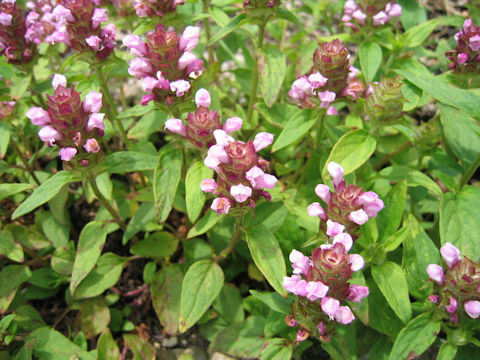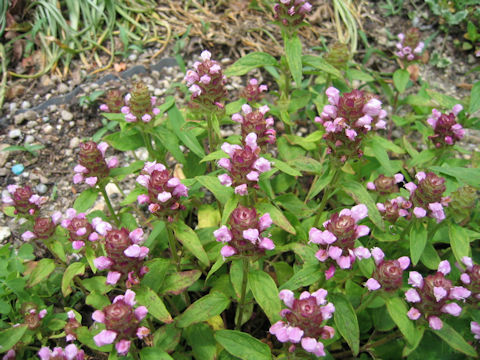 |






|

|
[VAå¤ÆkAJÉLªzµÄ¢Ü·BíªÌu¤ÂÚ®³ièÔjvÌßÅAââÔ̬³¢ÌªÁ¥Å·Bì¢ârÀÌÜíèÈÇAââ¼Á½Æ±ëɶ¦A³ÍUOZ`ÙÇÉÈèÜ·BsÉÍSŪ èAtÍâj`©ç·È~`ðµÄ¢Ü·BÍÁ«èµ½t¿ª èÜ·BT©çX²ëA~`ÌÔÉFÌÔð穹ܷBÔâÔÌ|iíà èÜ·B
|

|
V\ÈEc{OT®Ì½NÅAw¼Í Prunella vulgarisBp¼Í Common selfhealB
|

|
The Common selfheal (Prunella vulgaris) belongs to Lamiaceae (the Mint family). It is a perennial herb that is widely distributed in Eurasia and North America. It is closely related to Japan's "Self-heal" (Prunella vulgaris ssp. asiatica and is characterized by its slightly smaller flowers. It grows in slightly damp places such as along rivers and around ponds, and is about 60 cm high. The stem has 4 ridges and the leaves are lanceolate to oblong. This plant has a distinct petiole. Purple flowers come in cylindrical inflorescences from May to September. There are also white and peach blossom cultivars.
|

|
s{F¡suF¡sA¨övÉÄA2004N0529úBeB
|




